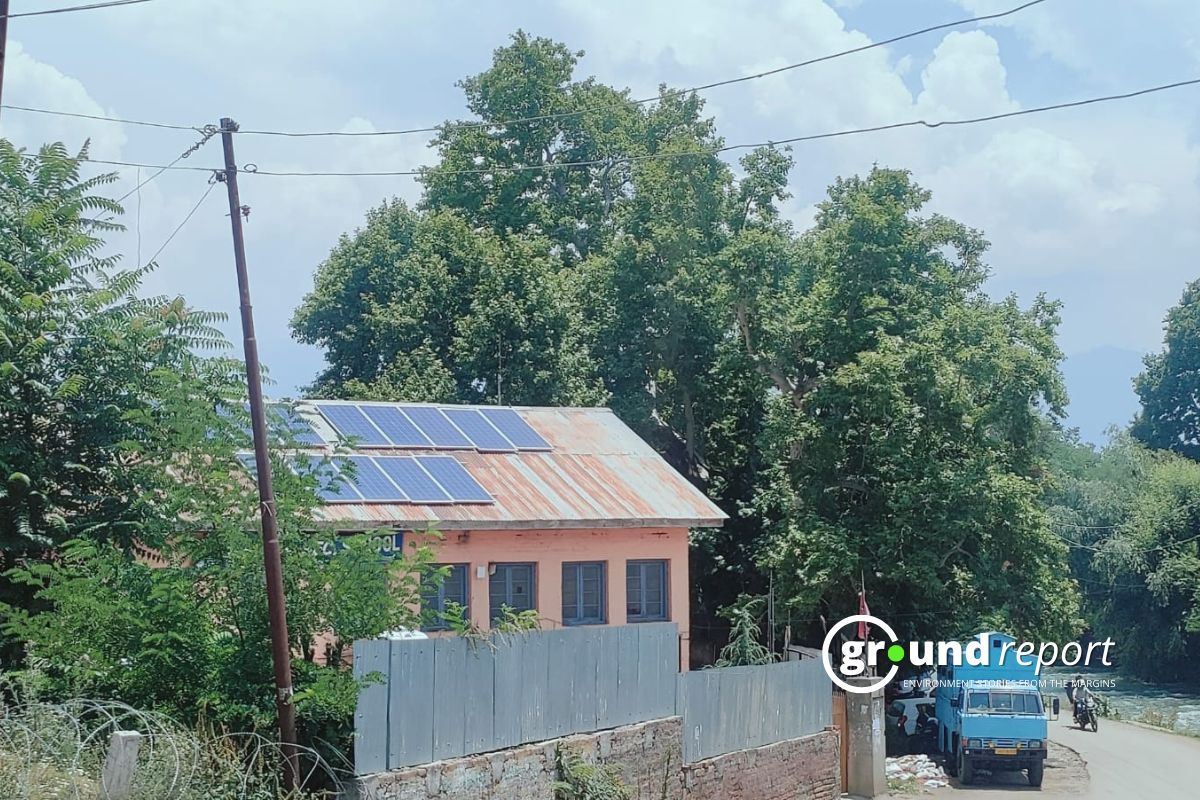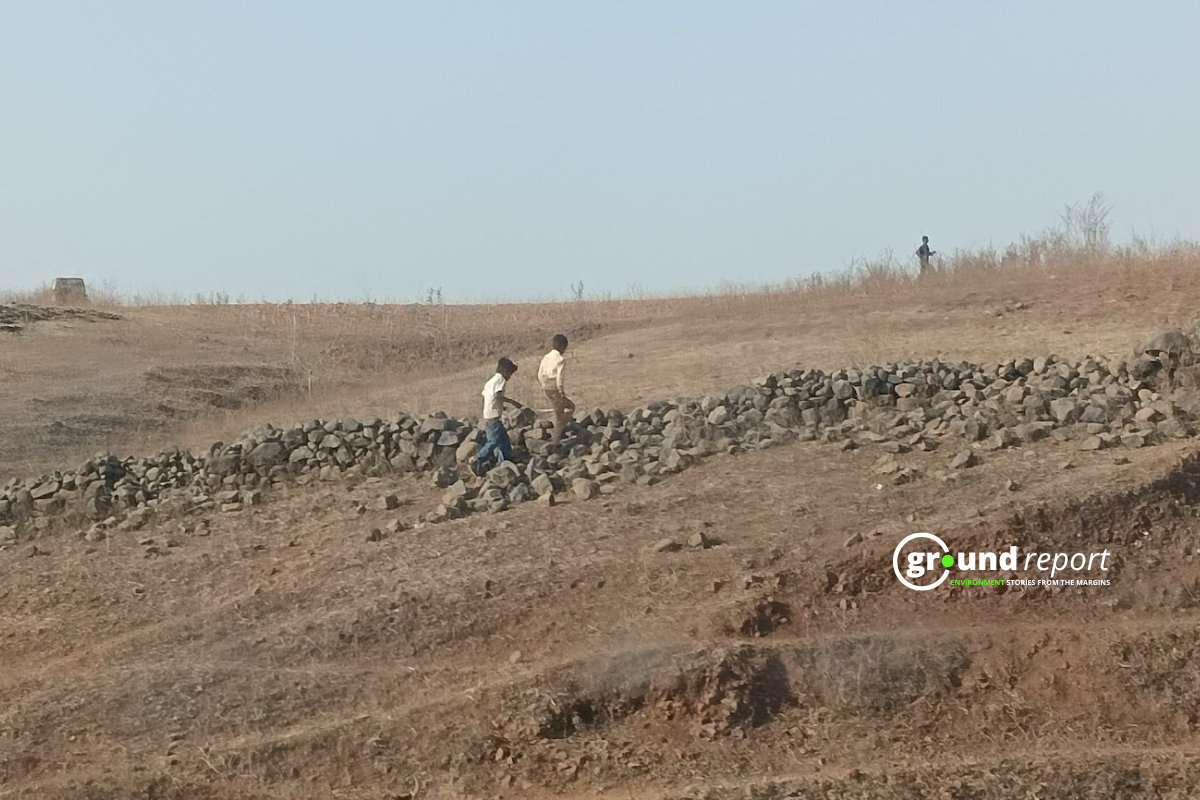In Jammu and Kashmir, energy generation is dominated by two major players. Firstly, the Government of India-owned National Hydroelectric Power Corporation (NHPC) holds a prominent position. NHPC operates eight major power generation stations in the region. In the fiscal year 2022–23, these stations collectively produced 24,740 million units of energy. This impressive generation constitutes 49 per cent of NHPC’s total power output from its operations across India during the same period.
On the flip side, the Jammu and Kashmir State Power Development Corporation (JKSPDC) stands as the second major player. Before establishing the two-phase 900-MW Baglihar project, JKSPDC primarily operated a network of small hydropower projects spanning Ladakh, Kashmir, and Jammu. Presently, it possesses 13 hydroelectric projects, excluding Baglihar. According to available data, in the fiscal year 2022–23, the total energy output from JKSPDC projects amounted to 5,191.65 million units, with the twin-phase Baglihar Project contributing 2,712.30 million units to this total.
Energy Demand… and supply
According to a report published in The Hindu, Kashmir requires 1,800 megawatts (MW) of power to maintain a 16-hour electricity supply and 2,200–2,300 MW for a 24-hour supply. However, the Jammu and Kashmir Power Development Department (PDD) generates 50–100 MW per day. As of April 2024, the Kashmir division receives 1,200 MW of power, while Jammu receives 900 MW, leaving a deficit of about 500 MW. The power crisis in Kashmir has reached alarming levels, with the valley facing the worst-ever electricity shortage this spring season.
“The unusual power cuts, up to 12 to 14 hours a day, have taken a toll, especially affecting people dealing with health issues, and have led to a dependence on oxygen machines,” said Babra Wani, a local from Srinagar.
The significant disparity between energy demand and supply consistently keeps power utilities on edge, particularly during the harsh winter months. An official from Kashmir Power Distribution Corporation Limited said that,
“the sector is grappling with substantial losses due to inadequate payment for the supplied power.”
A report for the fiscal year 2022–23 indicates that Jammu and Kashmir procured electricity from multiple power producers, amounting to approximately Rs 9,886 crore. However, power tariff collections amounted to only around Rs 3,652 crore. The report reflected the financial challenges faced in balancing supply and revenue generation.
Power cuts and solar energy
Amidst the power cuts, the government of J&K is actively exploring avenues to boost solar energy generation within the valley. Last year, the Jammu and Kashmir Energy Development Agency launched a new scheme stating that consumers can reduce their electricity bills and bank their surplus energy if they install solar power plants on their rooftops. A 20-megawatt rooftop solar project was introduced to cover 10,000 households. The scheme came with the idea of bidirectionality, i.e., the energy generated from the solar panels installed would be transferred to the grid itself. Technically, the cost of installation would be recovered in three years and the consumer would get free energy for the rest of their lives.
Farooq Ahmad, an official from KPDCL, told Ground Report that the Government of India provides consumers with two types of solar energy systems. The first type is an on-grid solar system and with this system, consumers can utilise the solar power generated during the day to meet their daily basic energy needs. Plus, any surplus energy produced can be transferred back to the KPDCL, allowing consumers to contribute to the grid and receive credit for the excess energy supplied.

“For example, if a consumer generates 10 units of power per day from their solar unit but only uses 5 units, the remaining 5 units are transferred to KPDCL. The consumer is then compensated for the transferred energy at the market rate, which helps him earn effective credit for their excess solar power.”
The other system is the Off-Grid Solar Energy System, which operates independently of any department. It gives consumers full control over their energy usage without any government interference.
“You are not connected in any way to your grid’s power system or utility company, which makes it 100% self-sustaining with the energy use,” Ahmad explained.
As of April 2020, J&K boasted a total solar power installed capacity of 40.63 megawatts (MW). However, the latest figures, covering the period from April 2020 to October 2023, reveal a meagre addition of just 15 MW, bringing the cumulative solar power capacity to 65 MW in 2024. While neighboring Himachal Pradesh demonstrated a remarkable advancement, surging from 40 MW to 111 MW during the same period that reflected a substantial 71 MW increase in solar power generation,. However, the slow pace and inadequate planning in developing solar energy have raised concerns among citizens and experts alike. Experts said that a more proactive approach could yield significant benefits.
“If only half of the registered consumers with DisComs (distribution companies) in J&K initiated the installation of solar rooftop systems, approximately 50 percent of the energy demand for consumers could be met,” said Khalid Raja, Assistant Executive Engineer at JAKDEA. However, the J&K government launched rooftop solar, almost a decade after the Union Ministry of Renewable Energy’s scheme introduction.
PM-Surya Ghar: Muft Bijli Yojana
Recently, after three years of promoting renewable energy sources, the government’s ‘PM-Surya Ghar: Muft Bijli Yojana’ scheme has received a positive response from the people of Kashmir. The scheme, envisioned by the Center, aims to facilitate the adoption of solar energy by offering households the opportunity to switch to solar power without bearing high installation costs. According to Kashmir Power Distribution Corporation Limited (KPDCL), within just two weeks of its launch, 3390 prospective beneficiaries have registered for the scheme from the Kashmir division, with 564 formal applications already submitted. In addition, Union Finance Minister Nirmala Sitharaman announced a series of initiatives to promote green growth and renewable energy during the Interim Budget 2024–2025.
We need to accelerate the transition
The comparative analysis of J&K’s solar power growth against other states underscored the need for a more robust and accelerated approach within the UT to alleviate the financial burden on the consumer. Following the introduction of electrical net metering in Kashmir, many residents have begun to consider adopting solar energy solutions.
“It is self-generated and can be used anywhere. The consumer does not have to worry about the power cuts and it is a one-term investment that will serve you for years,” said Aijaz Sofi, a local from Awantipora Pulwama district.
Given the region’s high energy efficiency, the potential of accommodating Solar Energy Systems in Kashmir is significant. For example, most houses have roof terraces oriented in the southwest direction, which is ideal for installing solar panels and maximizing sunlight exposure. This makes Kashmir particularly well-suited for harnessing solar energy.
“It only requires sunlight, and temperature does not affect energy generation. Solar systems can efficiently sustain energy needs for six to eight months,” Ahmad said.
He further emphasized that hydroelectric power projects demand significant human power and investment, in contrast to solar power projects. Solar energy systems can be implemented on a household basis with relatively safe investments, making them more affordable. Additionally, being a green energy system, solar power eliminates the scope for pollution, ensuring minimal environmental impact.
“Ladakh has already demonstrated a high dependency on solar energy, and the government is actively striving to promote the adoption of solar energy practices in Kashmir as well. Various schemes are already in place, but the administration must put in extra efforts on the ground to facilitate the transition from hydel power to solar power dependency,” Ahmad concluded.
Dr. Raja Muzzaffar, an environmental activist, told Ground Report that there is a widespread misconception among the people of Kashmir that hydropower is the sole source of energy. He emphasized that generating hydropower demands significant natural resources, including extensive deforestation and the blasting of mountains, which eventually pave the way for environmental disasters. The construction of hydropower plants in regions such as Doda, Kishtiwar, and Reasi has adversely affected numerous communities and caused significant environmental degradation.
“The damage has already been done. But solar energy offers a solution. To initiate solar projects, we require substantial tracts of land. Wastelands and sunlit mountain areas are ideal for harnessing solar energy. They can collect significant amounts of energy. And the transitioning of solar energy could help mitigate the environmental damage caused by hydropower projects.”
He further added that Kashmir has scope for wind energy projects as well. “We can generate approximately 6,000 megawatts of wind energy. If the government fully commits to developing both solar and wind energy projects, we can reduce our reliance on hydropower,” he noted.
While concluding, Dr. Raja Muzzaffar mentioned that the government has introduced subsidy schemes for the public. However, they have to ensure that these initiatives are effectively implemented on the ground and not just remain on paper.
Support us to keep independent environmental journalism alive in India.
Keep Reading
What is Green Hydrogen? Could it change energy in South Asia?
Blue hydrogen is worst for climate: study
How Increasing space traffic threatens ozone layer?
Hydro Fuel Market: India’s current scenario and the future ahead
Natural Gas is a Misleading term, It is not Natural and clean at all
Follow Ground Report on X, Instagram and Facebook for environmental and underreported stories from the margins. Give us feedback on our email id greport2018@gmail.com.
Don’t forget to Subscribe to our weekly newsletter, Join our community on WhatsApp, and Follow our YouTube Channel for video stories.






